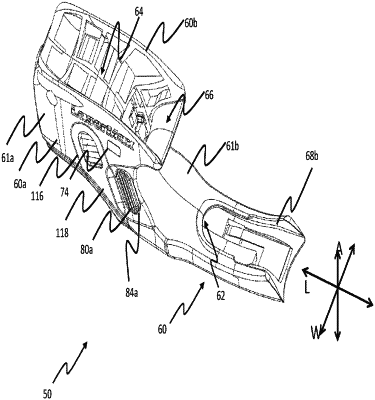| CPC F41G 1/35 (2013.01) [G01R 15/16 (2013.01); G01R 27/2605 (2013.01); H05B 47/10 (2020.01)] | 20 Claims |

|
1. A device, comprising:
a housing for a deterrent device;
a conductive surface mounted on a trigger guard of the housing;
an excitation source;
at least one processor; and
one or more non-transitory computer-readable media storing computer-executable instructions that, when executed by the at least one processor, cause the at least one processor to perform acts comprising:
causing, over a first time period, the excitation source to generate a first electrical field around the conductive surface;
receiving first signal data from the conductive surface indicative of a first capacitance signal over the first time period;
determining that the first capacitance signal remains within or below a range indicative of a presence of a holster or portion of a torso of a person in proximity to the conductive source over the first time period;
determining, based on the first capacitance signal remaining within or below the first range, not to send an instruction to an accessory device communicatively coupled to the device, the instruction causing the accessory device to perform an action;
causing, over a second time period different from the first time period, the excitation source to generate a second electrical field around the conductive surface;
receiving second signal data from the conductive surface indicative of a second capacitance signal over the second time period;
determining that the second capacitance value exceeds the range during the second time period; and
sending, based at least in part on determining that the second capacitance signal exceeds the range during the second time period, the instruction to the accessory device, the instruction causing the accessory device to perform an action.
|